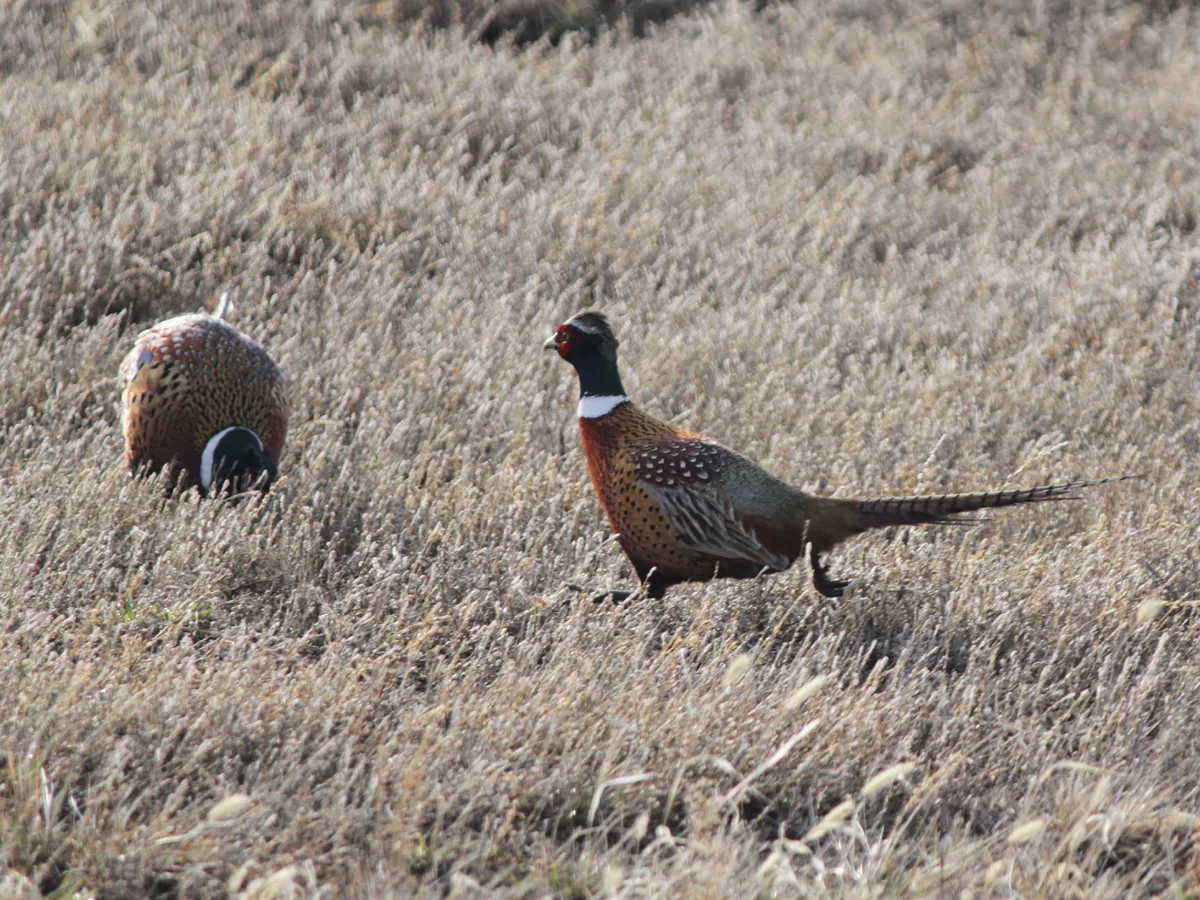
That’s a Fact! The pheasant is the most unique upland game bird in North Dakota, and a huge draw for hunters each autumn. Simonson Photo.
By Nick Simonson
The North Dakota pheasant hunting season opens Oct. 12, and the youth pheasant weekend is just a couple of days away on Oct. 5 and 6. That means the wait is almost over for another autumn afield, and with good numbers of birds forecasted in state agency surveys, the excitement is building with each passing sunset.
Wherever you might be after sunrise next Saturday (or if you’re a young hunter, this Saturday) stomping a cattail slough, working the grassy edge of a cut wheat field, or sleeping soundly in bed waiting for a later meet-up with your hunting buddies, here are a few fun facts about the bird that drives me, and many other hunters, mad at this time of year.
– On flat ground, a pheasant can run at speeds of eight to ten miles per hour. Once in the air, the birds can attain speeds of 45 miles per hour, though it often seems faster with a good tail wind behind them.
– The ringneck pheasant is not native to either North Dakota or the United States. The first several hundred birds were brought over from China to the Willamette Valley of Oregon in 1881 and successfully took root in that region, before spreading throughout much of the United States in the decades that followed.
– Removal of up to 90 percent of the roosters in a population of pheasants produces no significant reduction in offspring the next year, as hens remain the vital part of the equation in producing more chicks.
– Pheasants are a polygamous species. The average rooster will have a harem of three to seven hens and is capable of mating with several dozen hens in a spring courtship season without loss of fertility.
– There are several rare mutations in pheasants that will cause them to be mottled or completely black, or on the other hand, albino. The odds of seeing or even shooting such an oddly colored bird are extremely low
– Phasianus colchicus torquatus is the Latin name for the ringneck pheasant. Phasianus was the name of a river in Europe where great numbers of pheasants lived within the bounds of its valley, and lends itself to the modern English name for the bird. Colchicus was the latin name of the area surrounding the river. Torquatus, loosely translated from latin, means “adorned with a collar.”
– A hen ringneck can lay up to four clutches of eggs over a summer, but will only hatch one set of young each year. The primary goal of the hen is to produce young from the eggs. She will only lay new eggs if the first set was destroyed. Hens do not produce two sets of young. If juvenile pheasants seem small late in the summer, it is because they were a late hatch, and not a second set of young birds.
– The ringneck pheasant is the official state bird of South Dakota.
– Pheasant chick diets consist of such delicacies as spiders, slugs and beetles. Later in the season, as fall approaches, young pheasants turn to grains like corn and wheat, as well as soybeans for nutrition.
– Nationally, the years of 1941 through 1945 boasted the largest pheasant populations of all time, due primarily to the lack of men hunting during World War II. Shortly after the war, the populations were put back in check by hunters returning home from overseas.
– The current daily limit for roosters in North Dakota is three. There have been times in the past two where the bag limit has been two. This number is adjusted by the Game and Fish Department as they see fit in accordance with surveys, but has remained untouched for more than 20 seasons, as removing roosters has little impact on overall populations.
– Pheasant season is the latest-opening upland game bird season in North Dakota. The reason for this is so that young pheasants have time to grow into their adult plumage. This further helps hunters distinguish between the males and females of the species, as only roosters may be shot.
Using these facts, you can fight pheasant fever off for just a few more days until the crisp fall morning air and the crow of a flushing rooster let you know it is time to take aim at the wiliest bird around.
Simonson is the lead writer and editor of Dakota Edge Outdoors.
